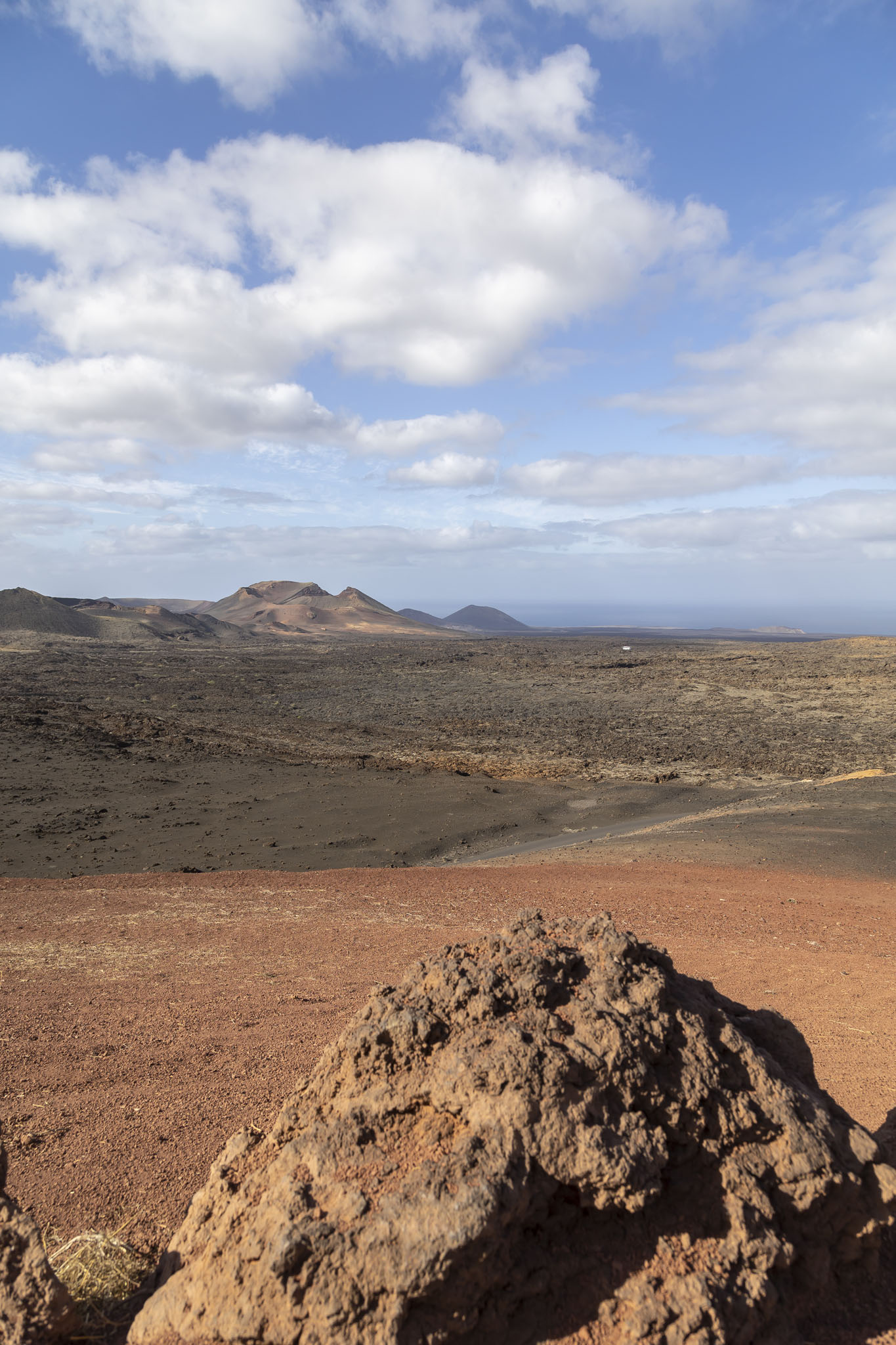Timanfaya National Park is located on the western side of the island of Lanzarote; an area of over fifty square kilometres of volcanic soil, rock, and hills. While it’s a place that can be visited by tourists in their cars, the only way you’re allowed to pass through the majority of this landscape of stunning barren geology is on tour buses, so that made opting to take an organised tour here an easy one. If you’re going to visit the Canary Islands for the first time, then you’re going to want to check out anything even remotely volcanic if you’re anything like us.
Before we headed to Timanfaya, though, there was the matter of waking up in the port of Arrecife, on the eastern side of Lanzarote, and about fifteen kilometres from where we needed to be. The weather was warm when it wasn’t windy, but it was rarely anything other than incredibly windy. A day of sunshine and cloud cover to come.
Our bus ride from Ventura to the national park was accompanied by a very similar bit of information about the history of Lanzarote to that we’d had on Tenerife when we visited Teide National Park. Understandable.
Timanfaya is the result of volcanic eruptions in the eighteenth and early nineteenth centuries. Over a hundred volcanoes ejected out over two billion cubic metres of lava across the island’s previously fertile landscape, burying it under the sort of landscape you might expect to see on Mars today. No deaths were recorded but nearly half of Lanzarote’s population emigrated as a result.
Geothermal heat emerges in certain places, and the main visitor area at Montañas del Fuego – where our bus initially dropped us – showcases this in a number of ways. Firstly, a restaurant on the site uses the heat from thermal vents to cook food, as you can see below.
Other demonstrations of how hot the ground underneath our feet was came through first being given some buried stones to hold (yeah, very warm), then watching some straw held over a hole until it caught fire, and finally watching one of the guides at Timanfaya pour water into a hole only for the steam to shoot out seconds later.
We had a little bit of time to simply admire the landscape before we’d take our bus on a ride through it. What struck us was the variety of colours of the volcanic vista.
A big surprise about Timanfaya National Park on Lanzarote was comparing it to Teide National Park on Tenerife. We’d imagined that both would be pretty similar, but that truly wasn’t the case, and we’re glad that we decided to take volcanic landscape tours on both islands just to see how very different they were.
Timanfaya only formed the first part of our day’s cruise excursion on this particular Canary Island. Following on from the national park we would be seeing how Aloe Vera is extracted (oddly fascinating), then paying a visit to (and sampling the wares of) a vineyard with a difference, with grapes grown in circular depressions in the volcanic soil, making use of the minerals and heat for a unique style of wine. You’ll be able to see photos and read about all of that in the next post in this travelogue series: Aloe Vera And Wine On Lanzarote.


























